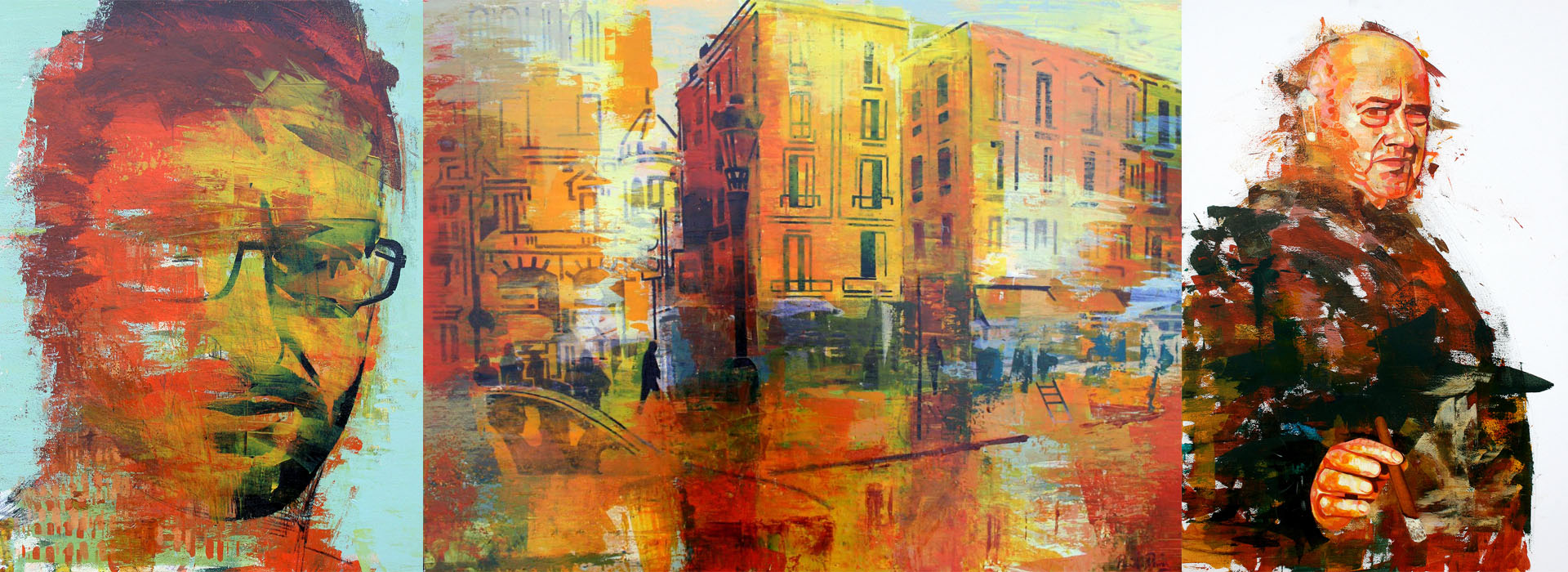Phil Davis studied Fine Art and Sculpture at Loughborough University, completing his degree in 2004. An accomplished draughtsman, Phil initially presented scenic depictions and travel experiences in pencil and oil pastel, using intense, bold colours as a way of reflecting a childlike wonder in the new, and in a sense the extreme, sometimes uncomfortable emotional commitment involved in relating to the culturally unfamiliar.
Changing to working largely with oils resulted in work of much greater vibrancy, and allowed the extreme emotional sensations in which he was interested to be committed more successfully to a canvas. His work now strives to acknowledge both the positive and negative energies, the good and the bad consequences, of these emotions, and how they inform our view of the world around us.
1) Which art movement do you consider most influential on your practice?
I can't say it's one particular movement, I take from numerous different ones. In a nutshell probably Expressionism and Realism, I like to work in both ways as there's interesting creative potential in combining spontaneity with refined imagery, the combination is good for challenging artistic boundaries. Within it, though I like the additional influence of pop art, graffiti art and bold imagery which is why I like creating layering effects with handmade stencils.
2) Where do you go and when to make your best art?
I'm always studying and planning for new works so I like to sketch and compose in most situations when I can, especially when travelling, meeting people or relaxing in pubs. It's always good inspiration and experience for me. I'm pretty restless in that way! I feel at my most peaceful and excited when it all comes together in the studio.
3) How do you describe your 'creative process'?
Spontaneous and disciplined at the same time. Before I do a piece of work there's actually quite a lot of planning in how I want the painting to look composition and colour wise. For me, pure expressionism is too easy a direction and self-indulgent, I like what I do to have narrative and purpose.
4) Which artist, living or deceased, is the greatest inspiration to you?
Too many artists! I can't narrow it to one. On top of that, my approach is also influenced by music and film imagery so I can't confine it to just visual artists. In terms of sheer visual impact, power and versatility of his work, probably Picasso. His output also taught me a lot about creative possibilities.
5) If you weren't an artist, what would you do?
A musician.
6) What do you listen to for inspiration?
All sorts of music from all sorts of genres, as long as the songs give me the kicks I need! Music's as important to me as painting, and as without boundaries! To name certain artists that inspire the way I paint, probably John Martyn, Curtis Mayfield, Miles Davis and Gil Scott-Heron.
7) If you could own one artwork, and money was no object, which piece would you acquire?
'The Taking Of Christ' by Caravaggio
8) If your dream museum or collection owner came calling, which would it be?
The Reina Sofia Museum Of Art, Madrid.
9) What is your key piece of advice for artists embarking on a fine art or creative degree today?
Be absolutely sure it's the right one for you, and be true to yourself.
10) What is your favourite book of all time (fiction or non-fiction)?
'Tropic Of Cancer' by Henry Miller
11) If you could hang or place your artwork in one non-traditional art setting, where would that be?
The sound stages at Elstree Studios.
12) What was the biggest lesson your university course or time studying taught you?
That painting was my true passion instead of sculpture.
13) And finally, if we were to fast forward 10 years, where would we find you?
I can't predict that, but hopefully on the walls of the major galleries around the world!










